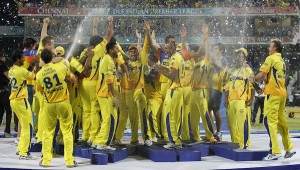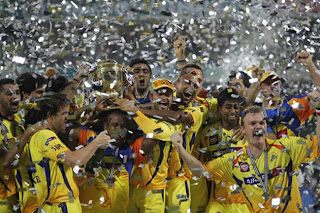Ram Puniyani
Nearly nine years after the carnage of Gujarat (Feb 2011), a perception has been created that Gujarat is developing with rapid strides, there is all peace and harmony and minorities are happy. Like 'Shining India' a word has been coined, 'Vibrant Gujarat'.
Nothing can be farther from truth. In the aftermath of the violence, the death of over two thousand Muslims, the rapes, the humiliation at the hands of instigated mobs, are still fresh in the air as the state has totally been unjust to the victims of the violence. There was no rehabilitation worth its name, the 'refugee camps' were closed too soon. State totally washed its hands off the rehabilitation process.
Today while the few amongst the Muslim minorities, especially a section of traders, have been won over by the BJP and dominant social forces, the majority of Muslim community has been forced to live the life of severe social and economic deprivation.
The trend of ghettotization is increasing in major cities and expanding. Juhapura is the showpiece of the fear and insecurity which has gripped the Muslim community. Many a traders are trying to continue with their businesses in old localities while settling their families in the Muslim ghettoes like Juhapura. Most of the Muslim establishments have changed their names and patterns to sound like being the Hindu establishments, with the hope that this will prevent their religion being identified in the future pogroms, protect their property, and this move will overcome the economic boycott from the majority community. Incidentally this call of economic boycott of Muslims has been given by VHP.
The domination of Modi/BJP in the social and political arena is leading to the situation where a large section of Muslims is forced to hide their pain and anger and carry on with the ignominies of their situations. Remarkably many a social groups from amongst Muslim communities are concentrating their work in the area of education; preparing the youth to take up jobs in the fields that are free from discrimination, and to prepare them to traditional and newer avenues of self employment.
A major study by Abdul Saleh Sharif (Relative Development of Gujarat and Socio-Religious Differentials, 2011) is very revealing about the condition of Muslims. This shows that Muslims fare very badly on the parameters of poverty, hunger, education and vulnerability on security issues. The study shows that levels of hunger are high in Gujarat alongside Orissa and Bihar . Muslims are educationally deprived. Muslim community which at one time was dominating in diamond and textile trade has been pushed behind. Poverty of Gujarat Muslims is 8 times more than high caste Hindus and 50% more than OBCs. Twelve per cent Muslims have bank accounts but only 2.6% of them get bank loans. This study concludes that Muslims in Gujarat face high levels of discrimination, even on the roll out of NREGA, Gujarat is at the bottom of the pile. (TOI, Feb 18, 2011, Mumbai)
As per the report of Pratham, an NGO devoted to the issues of education (Annual Status of Education Report), Gujarat is worse than Bihar when it comes to educational standards. Gujarat has been doing miserably in Social development indices and its budgetary allotment in this sector is low compared to other large states, being 17th amongst the 18 large states. While all this is happening, the mental ghettoes, the emotional partitions have become fairly strong and physical ghettoes tell the real truth of Gujarat, the 'Hindu Rashtra in One State
Through conclaves like Guarvi Gujarat, and the annual meetings of NRIs; Industrialists, investment is being solicited and more than the forthcoming investment, projections are being made of the flow of dollars, creating the image that it is during Modi regime that Guajarat has begun to progress. The fact is that there are some investments; there is some industrialization; but it is far from what is being projected. In previous Vibrant Summits claims of big capital investments have been made. For example in 2005 claim for Rs.106161 crores had been made. Out of that investment of Rs.74019 crores (63%) was made as stated by Chief Minister but in reality as per the information availed under R.T.I. only Rs.24998 crores (23.52%) projects were under implementation.
As per Teesta Setalvad, "…Likewise, in 2007, 363 MoU (Memorandum of Understanding) were made in which Modi Government claimed to have mobilized capital investments of Rs.461835 crores. Factually this amount was Rs.451835 crores and not Rs.461835 crores so an excess investment of Rs.10000 crores was claimed. Out of this State Government claimed to have made an investment of Rs.264575 crores but as per the figures by Industry Commissioner of Gujarat projects worth Rs.122400.66 crores (27.08%) were under implementation. Actually out of the investments in 2003, 2005 and 2007 only 20.28% of projects were under implementation in Gujarat ."
While Gujarat was already amongst the most industrialized states, it has been able to invite good deal of investment. Still it remains next to Maharashtra which leads the pack. While one does not hear much about the Maharashtra progress, through different types of media hypes the image of Gujarat phenomenon has been built up. The industrialization in Gujarat has a pattern. Two decades back, the growth rate of Gujarat was something between 12 and 13 per cent. The national average was six to seven per cent then. Today, Gujarat has the growth rate of 11 per cent while National growth rate is 10 per cent. This fact should make the matters clear to us.
As such Gujarat state has opened its coffers to subsidize the industrialists. Land, water and soft loans are the order of the day; they have been given to the industrialists at extremely cheap rates. It was one of the reasons because of which Tata shifted his Nano project to Gujarat . The subsidy, which this small car gets, is huge. Industrialists are having a free run and the social concerns like job creation are very poor in the Gujarat pattern. Tamil Nadu and Maharashtra are far ahead of Gujarat in the Job creation ratio on the investment. The investment figures which are flashed are not all actualized. One of the major victims of the reckless industrialization is the ecology, which has been ignored totally far as Gujarat is concerned.
The growth differentials in Gujarat are very appalling. On one hand, there is the growth, on other there is a serious decline in the social indicators of like sex ratio. According to 'India State Hunger Index 2008', Gujarat is shockingly ranked worse than Orissa. Gujarat is ranked 13th in the 17 big states which were calculated in this list. Gujarat is only above Jharkhand, Bihar and Madhya Pradesh, which are globally equal to the hunger situation in Ethiopia
Modi, in a reply given in state assembly stated that in one year up to Jan 2007, 148 farmers had committed suicide and the condition is worsening on that score. While on one side the state exports electricity, its villages are having a power deficit. Indian Express 8th April 2007 reported that state is reeling under the shortfall of 900 mega Watt of power, the victims of this are mainly in the villages. One of the indices of poverty, prevalence of anemia, is very revealing on this count. The percentage of women suffering from anemia has risen from 46.3% in 1999 to 55.5% in 2004 (Third round of National Family Health survey report 2006) among women. Amongst children it rose from 74.5% to 80.1%. Some of the reports point out the conditions of dalits and women has deteriorated during last decade. For women, one of the indices is the declining sex ratio in Gujarat during last decade. The plight of Adivasis is no better.




